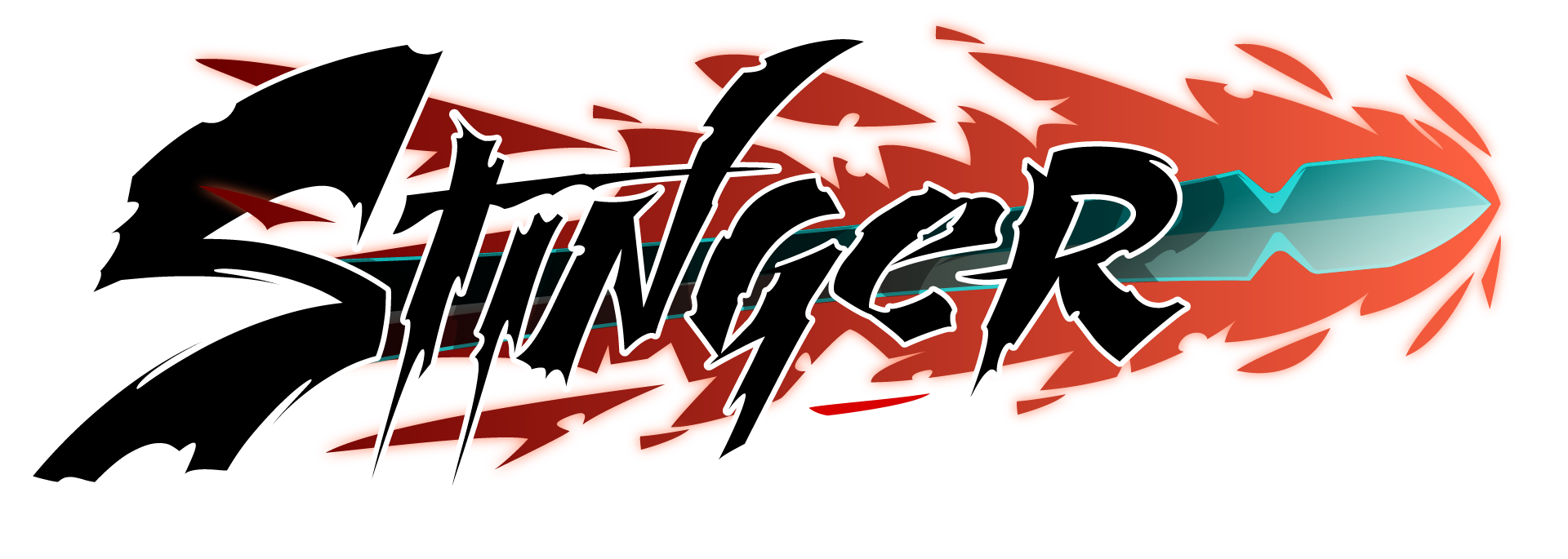Late 2024 we saw the release of Magenta Horizon. Made by Maddison Baek from Korea, this little action-game-that-could quickly gained a cult following within the action-gaming community. His goal? To make an action game that fit his vision for the genre, all by himself. Recently Stinger Magazine sat down with Madison and talked about what it’s like to make an action game as a solo-developer. The highs, the lows, and where to go from there.

Stinger: First off, welcome! Let’s start with probably the easiest question: what inspired you to make your own game? Let alone one so deep, vibrant and large.
Baek: There are multiple inspirations in terms of game design aspects. Things like Devil May Cry, Ninja Gaiden, FromSoftware games; the usual stuff. But if I have to pick certain games that inspired me to think “Hey, maybe I can make a cool action game by myself”, that would be The Dishwasher: Vampire Smile and Unsouled. They were similarly done by mostly one person, and you can see that these games didn’t give a damn about compensation when it comes to showing their true color. As a person who got burnt by constant negotiations and nagging from my previous comrade developers, these two games gave me the confidence to start my own development.
Stinger: So you previously worked as a game-designer at a studio, how did that prepare you for becoming a solo-developer, and what made you want to take that leap of faith?
Baek: It started out of pure spite. Like I said, I worked with my old comrades and the development environment was not a good place to spread my creative energy, to put it lightly. Thankfully I learned how to use Spine 2D [ an animation tool] and Unity there, so I left the team with a self-made promise: that I’ll make a game that I won’t regret, and I will show them I could do that alone. As a side note, I was multitasking my main job elsewhere so there was no financial problem.
Stinger: What do you feel were some of the biggest challenges you faced during the development of Magenta Horizon? And how would you avoid them in the future?
Baek: Preparing graphical resources can be a pain in the ass, but at least it’s quite enjoyable to craft them. The most frustrating part however would be more trivial things. Something like a tutorial section, User Interface(UI) or a Save System; things that are taken for granted are probably the most headache-inducing one when it comes to development. How do I teach the players when there are tons of fundamental tools? How do I manage the UI-canvas without over-encumbering the layout? Things like that. You might be able to see some fragments of “I’m done with this. Just ship it as it is. Whatever” in the final outcome because of the frustration I had with the development process. Ideally, I should hire people who are good at this job for future projects. But maybe now that I’ve experienced doing it once with Magenta Horizon, maybe I can prepare better and do it by myself again.
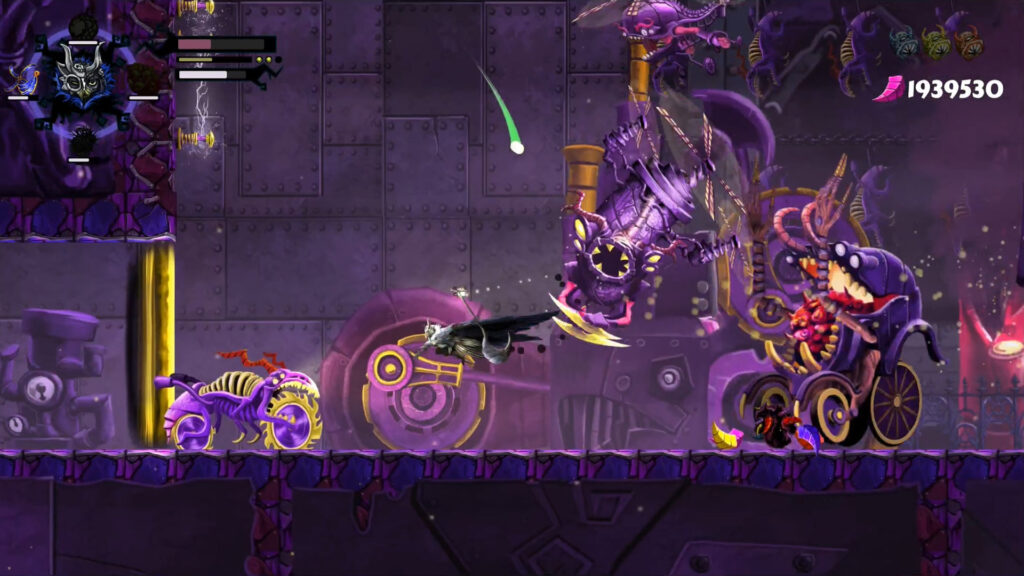
Stinger: The action-genre is ripe with diverse entries, from those focusing on style, survival or resource management. How did you set out to design yours, and what made you settle on those choices?
Baek: My development process was very spontaneous. It started with “I want to make a stylish action combat, so what I need is … a style meter!” but then after implementing the healing bomb, my train of thought went to “Maybe I should push more resource management too”. And to make the deal-trading via healing bomb more relevant, I added a lot of hazards in a given situation and I found enjoyment from there. So the final destination of the train of thought was “efficiently kill the enemies to survive, and that’s the most stylish thing ever”.
It’s definitely not the direction I was expecting at the beginning of the development, but I don’t regret that the game’s direction arrived at this point.
Stinger: That must’ve been hard to do though, without other creatives to bounce ideas off of. How did you handle such a large creative undertaking by yourself?
Baek: It’s all about inputs. Four years were enough for me to dive into all sorts of contemporary and old-school action games, and it surely provided me with a lot of game design ideas. Enemy design was the most enjoyable and the easiest part of this process because you can just take any cool monster idea from a certain game and put them in your game with a little bit of a twist. For example, Cadilosh is a reimagined Armored Core VI boss on a 2d plane, and Nightmare Reaper is a combination of Incendiary Shuriken Ninja from Ninja Gaiden II and Shadows from the first Devil May Cry. If you see my backlog, you will be able to see right away where I got certain ideas from.
Stinger: In your making-of video [shown below], one of the key elements present seems to me that you made Magenta Horizon as an action-game for the hardcore fans; those that pour hundreds of hours into them. This is a stark contrast to many modern action-titles which seem focused on pulling in more casual and wider audiences in hope of higher margins. Were you afraid this would end up hurting your game in the end? And what made you push this through?
Baek: My line of thinking was that many people who have played plenty of games would be sick of all the “skill trees”, and “incremental progression” to get to the meat of the gameplay, and I’m certainly one of them too. And since there were a lot of people raving about “gameplay-centric games” in the YouTube essay formats, I assumed there were enough audiences for my approach – giving almost all the tools from the beginning and letting them learn on their own pacing- and it wouldn’t hurt my game.
Well, turns out even the experienced players needed some “hand-holding” and “unlocks” to make them pass through the early game, so I guess the goal of “let them learn the game on their own” is not working for the modern audiences. It’s a shame, but what can I do about it anyway?
Stinger: I’m curious though. Action-games sometimes take years to be fully appreciated or even understood, since there’s such a large learning curve. Did this worry you that it might happen to your game?
Baek: Honestly, I thought I would get a good amount of recognition right away with word of mouth in between the hardcore action gamers. Turns out…yeah, it takes a lot of time to let the pot boil. I’m hopeful about the future when more people actually dive into the harder difficulty runs or speedruns.
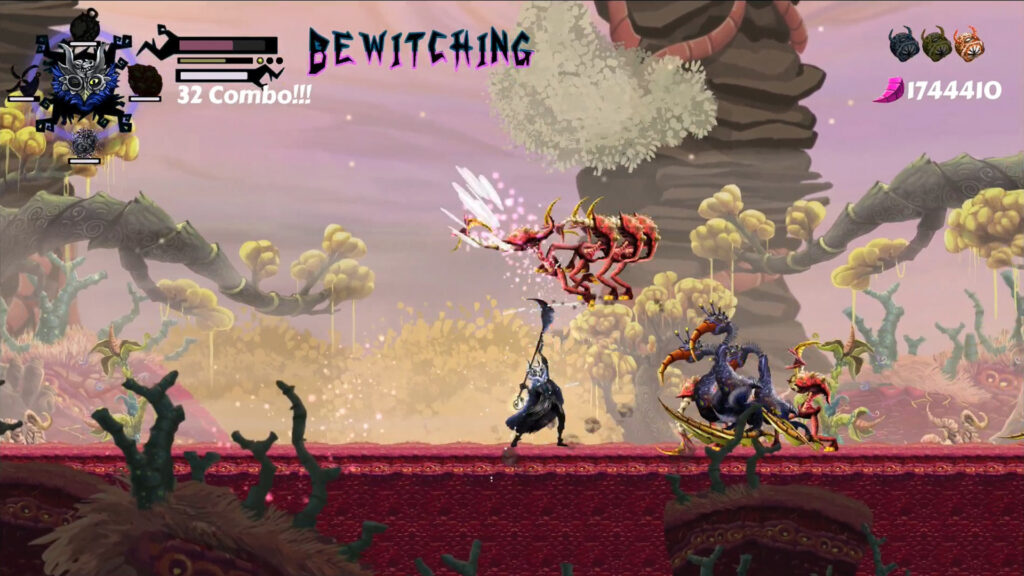
Stinger: Many action games feature a ranking system, but more often than not they are either half-cooked, are easily exploited or promote a dull playstyle. How did you set out to tackle this with Magenta Horizon?
Baek: Getting the high style points is easy. You just need to mix some ranged attacks here and there, and juggle multiple opponents, and naturally you would see yourself getting to [Supreme Spectre Savior] mode. However, the challenge is coming from “killing the enemies” while maintaining the high style, mainly because you only get the designated score upon killing the enemy, and there are so many overlapping hazards on screen so not getting damage should also be considered [Style deduction happens when you get hit]. The ideal way of getting high scores in my game incentivizes the gameplay of snowballing the victory when you are on the higher ground and I think it suits well with the ideal flow-state of the game.
Stinger: Speaking off, how do you set those criteria for the much desired SSS-rank? By testing yourself? And how do you know when you’ve found the sweet spot?
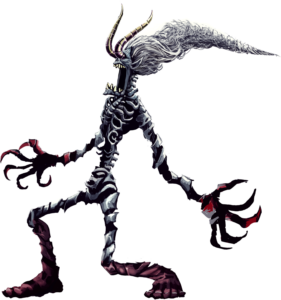
Baek: I playtest them all on every difficulty level. When I’m setting the threshold, I just do a “1CC run” on a stage with my best performance and check the score on the run. This would be the initial “required score” to get the SSS rank. Then, I mostly deduct some required scores from the threshold because I know I’m inconsistent when it comes to maintaining high performance, and people, in general, wouldn’t be able to get on my skill level even with long practices, so I have to provide some leniency to lower the frustration.
Stinger: You mentioned difficulty-levels. How did you design the enemy compositions at higher difficulties? Did you have a specific strategy or gameplay style in mind that you wanted to push harder on players that sought harder challenges?
Baek: This one was influenced by Doom Eternal’s Master Level composition where the level structure remains the same as vanilla but the enemy composition alone can provide a completely different experience. It’s like their own way to combat the “cheesy method” to beat the game in the vanilla campaign, and I kinda wanted to implement that aspect: the situation where players can’t rely on a pull-back method that was easily usable before.
If the Normal Difficulty allowed some leeway to approach with a minimal set amount of tools, I just made Reaper and higher difficulty borderline impossible to do without constant aggression with multiple tool usages. Even your health should be utilized as your “resource” to combat the situation which is not a common aspect to be found in other action game’s harder modes.
Stinger: Taking a break from the gaming-side for a second, the art style of Magenta Horizon is very striking and unique. What were your main artistic influences?
Baek: Character and environment design-wise, it was heavily influenced by Tim Burton, Terry Gilliam, Laika studio, Jorge R. Gutierrez, Double Fine, and FromSoftware games. The in-game art style is built upon the spine animation foundation [things like modern Rayman and Salt and Sanctuary games] because it’s easier to manufacture the characters and animations. Something that would be borderline impossible with frame-by-frame drawing all by myself. In an ideal world, I would have a whole art-team working under me and everything would be done in 3D stop-motion animation because that’s my favorite animation style, but yeah… the path of a solo developer is full of unending negotiations.
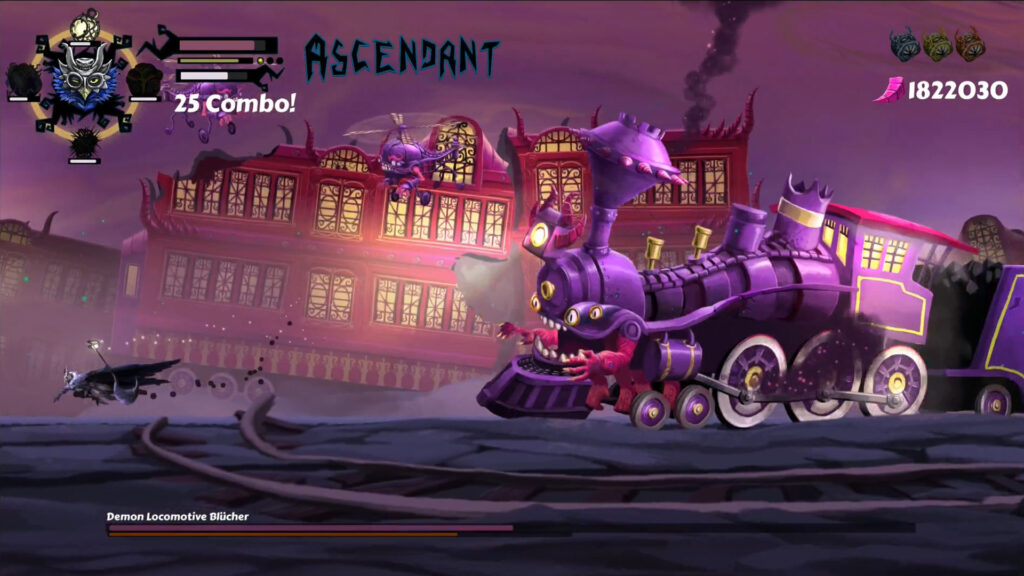
Stinger: The game went into early access in 2022, nearly two years prior to release. With even some members of Stinger’s forums participating. How was this experience for you, and do you feel it helped make the game better?
Baek: I was glad to know that there were people who shared the similar brain wavelength with mine. Some of them actually participated as QA and proofreaders which was a great help for me. Overall, joining Stinger’s forum was a good idea. Even if it wasn’t the game development, it has by far the best Ninja Gaiden guides too. (wink wink)
Stinger: Ha! Flattery will get you everywhere. That said, it did work I feel. The users were very positive, and the game currently ranks a Very Positive (95) rating on Steam. Sadly you recently made a post highlighting that the game did not meet sales expectations nor did it get many mainstream reviewer’s attention. How do you think that happened, and looking back how would you prevent this in the future?
Baek: I knew I was in the losing game when I was dealing with the coverage because even in December, there were plenty of big games such as Indiana Jones or Path of Exile 2. Journalists would cover those games instead or they would have a sweet Christmas vacation time. There’s no reason why they would give a damn about an obscure game like Magenta Horizon. For the public reception, I think one of the biggest reasons why it didn’t get enough approval from the majority is that the game was pretty brutal in the onboarding process, and therefore many people didn’t even get to the real meat of the game.
One thing that I feel people misunderstand is that difficult games, and I mean not just souls-likes but also classic combo action games, aren’t shared by the words of veteran gamers’ mouths. It’s actually the polar opposite. Words of mouths are driven by the normal silent majority who somehow could beat the game. Early Devil May Cry and Ninja Gaiden games could thrive in the early days even with their brutality because there were no competitors back then. Today? If they get frustrated, they just switch the game off because there are tons of alternatives anyway. I think I should have gone easier early on. Maybe the developers’ bias was a bit too strong with my implementation of the early game.
Stinger: Hindsight is 20/20 in that regard. Looking more to the future, I do hope you’re enjoying a hard earned break after such a long project, regardless of the outcome. With that said, what’s next, do you have any plans to continue to support Magenta Horizon, or are you moving on to another solo project?
Baek: More localizations will be on the way. And with the reveal of the Switch 2, I should find a way to port the game into it. I’m currently learning Blender for my own portfolio, but if I get good enough, I can move on to the next project featuring 3D elements. Not a hard promise, but I would love to do it.
Stinger: It’s cool to see you keep learning new techniques, pushing forward. I was once told Game Development is an artform that requires you to be an everyman, from animation, modelling, rigging, gamedesign, coding – it’s an impressive feat, let alone for one man. To those willing to undertake a similar journey, what would you like to tell them?
Baek: Please don’t do this for your own mental health.
Stinger: Hahahaha
Baek: Okay, joking aside… if your primary goal is not your monetary gain, what you need to focus on is making a game that you would love to play even after thousands of playtests. You have to playtest your own game, and what’s the joy of that process when you can’t find any enjoyment from it? Also, please be open-minded about references. From the old school arcade games to the modern games catering to the major audiences… You can learn bit by bit from those entries. Even if there are mismatching design philosophies, games are made with multiple components, and you can always use that component for your own purposes.
Stinger: Sound advice! I’d like to thank you so much for your time and patience in answering these questions. I wish Magenta Horizon nothing but the best and hope to see something fantastic from you again in the future, of which I have no doubt!
For all the readers, you can follow Baek via the link listed below and be sure to check out Magenta Horizon on Steam if you haven’t already. It more than deserves your time and attention!
https://bsky.app/profile/maddisonbaek.bsky.social
https://store.steampowered.com/app/2109060/Magenta_Horizon__Neverending_Harvest/

